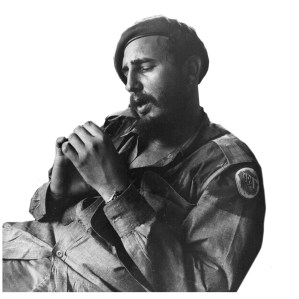
Harlem is a place that provokes the kind of grand, sweeping proclamations usually reserved for dying social movements or God. Harlem is nowhere (Ralph Ellison); Harlem is heaven (Bill “Bojangles” Robinson); Harlem is the new black (T-shirts hawked on 125th Street). It is a physical place as much as an idea, roughly determined by the coordinates of wide, skyward boulevards and streets that, by some mnemonic trick of geography or architecture, reveal themselves in ways other Manhattan streets do not. Old buildings run low to the ground, uncrowded by skyscrapers. History, with all its cornices and side alleys, remembers itself from block to block. But Harlem exists no less insistently in the realm of myth, and it’s this juncture, real and mythic, over which the Hotel Theresa presides.
The Theresa, like Harlem itself, was not intended to be the locus of black culture it became. Overzealous speculation uptown, commercial construction downtown and the slippery currents of social ferment collided to produce the heyday of Harlem. All this happened in a time so condensed that less than a decade earlier, Harlem had been an exclusively white enclave. The result of these compressed and colliding forces was a spectacular spark of social progress—all the more stark for its grim backdrop—coinciding with near constant reminders of racial oppression.
At the Theresa, for instance, as at the Cotton Club, the Victoria and the Alhambra, whether Duke Ellington laid down the beat or Ella Fitzgerald sang scat, the one constant was the crowd, which was a uniform sea of white.
The Hotel Theresa was built by Gustavus Sidenberg, a German-born stockbroker who first made his money, by some accounts, as a manufacturer of lace, and by others, as a maker of cigars. Named for his late wife, the Theresa was Sidenberg’s first and only foray into large-scale development, but it was by no means an ambivalent effort. Hiring the elite architectural brother duo George and Edward Blum, Sidenberg seized on their most ambitious design, one replete with agile geometric patterns, regal archways and, at 160,000 square feet, formidable girth. The hotel’s graceful symmetries gazed east across yawning Seventh Avenue and all the way down the rush of 125th Street. When it was completed, in 1913, the 13-story Theresa stood taller than any structure in the vicinity. To the society crowd, it became “the hotel uptown,” fetching princely sums for each of its 300 rooms.
But by then, Harlem was already beginning to change. The exuberance of turn-of-the-century land speculation had led to overbuilding and diminished property rates, and Philip Payton, a black real estate entrepreneur, saw an opportunity. With increasing numbers of black, middle-class tenants being edged out by development downtown, Payton convinced Harlem landlords to accept slightly higher rents in exchange for dropping their whites-only policies. (Some of Payton’s early tactics, he recounted in Sondra Kathryn Wilson’s Meet Me at the Theresa, also included the skillful manipulation of feuds between property owners.)
Local newspapers warned of the coming “invasion,” and antagonistic residents mobilized to keep Harlem white, according to Gilbert Osofsky’s Harlem: The Making of a Ghetto. “We are approaching a crisis,” said John G. Taylor, the founder of the Harlem Property Owners Improvement Corporation, in 1913. “It is the question of whether the white man will rule Harlem or the Negro.”


